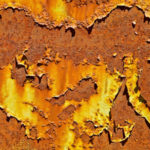Supplementary Tests or, Oh yeah, I need this too!
Supplementary Tests –
Oh yeah, I need this too!
EIA 364D Test Group 5, or Supplementary Tests, covers a variety of testing purposes and procedures. There are many reasons supplementary tests may be necessary, and EIA 364D contains several tables (tables 4 through 7) that define some categories of supplemental tests. Many supplemental tests do not require any exposures and are primarily measurements. In some cases, supplemental tests are destructive, and for that reason cannot be included in test groups one through five.
Table 4 is simply called Additional Tests, and the tests included are generally relevant to broad classes of connectors. Some of the more commonly specified tests from Table 4 are plating porosity (TP53) applicable to gold/nickel plated contacts, contact force (TP04), and contact retention (TP29).
Tables 5a and 5b covers connector accessories, such as cable clamps and shells, and include cable pullout (TP38), impact (TP42), and shell-to-shell conductivity (TP83) testing. A note in Table 5b recommends that shell-to-shell conductivity be performed after each applicable environmental exposure.
Table 6 covers supplemental environmental tests for connectors that may be exposed to particular environments such as fluid immersion (TP10), sand and dust (TP50), and air leakage (TP02) for sealed connectors.
Table 7 covers tests for terminations such as crimped connections like tensile (TP08), soldered connections and solderability (TP52), and IDC terminations such as cable flex (TP40).
This is not to say, however, that Test Group 5 cannot include sequences of exposures and measurements. For example, a connector may be intended for applications in a variety of environments. In such cases, a Test Group 5 supplementary environmental test group could essentially repeat a Test Group 4 sequence, but with alternative exposure conditions suitable for the intended operating environment range.
 Another example would be to use Test Group 5 to determine the current capacity, or current rating, of a connector intended for power applications. In that case, the Test Group 5 sequence could follow the Test Group 2, with some modifications.
Another example would be to use Test Group 5 to determine the current capacity, or current rating, of a connector intended for power applications. In that case, the Test Group 5 sequence could follow the Test Group 2, with some modifications.
The current capacity of a connector is defined in terms of the temperature rise of the connector as a function of current. A 30 degree centigrade temperature rise is the most commonly used T-rise criterion. Thus, the continuous current that produces a 30 degree centigrade T-rise over ambient defines the current rating of the connector. Therefore, T-rise versus current (TP70) should be added at two points in the test sequence—between the first electrical resistance measurement and durability, and at the end of the sequence after the final resistance measurement.
When a test sequence is intended to evaluate a power connector, two resistance measurements are often made: LLCR, Low Level Contact Resistance (TP27), and CRAC, Contact Resistance at Rated Current (TP06). If both resistance measurements are required, LLCR should always precede CRAC. LLRC measurements are typically performed at 20 millivolts open circuit voltage. This voltage is too low to electrically disrupt any surface films that may impact the interface contact resistance. CRAC measurements may apply voltages sufficient to electrically disrupt any such films. In the initial measurement, when films are unlikely, this is not an issue. But at the end of the test sequence, film disruptions will negate the purpose of the environmental exposures, which is to stimulate the formation of films that might be expected to be created in the application environment. The same argument would lead to the elimination of the optional electrical resistance measurement, or use of only an LLCR measurement in the Test Group 2 sequence.
An additional modification to Test Group 2, if it is used as a template for a Test Group 5 sequence to determine the current rating of a power connector, is to provide options to humidity for a corrosion exposure. As mentioned in a previous article in this series, humidity, steady state or cyclic, are both covered in TP31 and are appropriate for tin-coated connectors. For gold- or silver-coated connectors, a mixed flowing gas exposure (TP65) is recommended. Silver is a commonly used contact finish for power connectors.
For completeness, a Temperature Life exposure (TP03) could also be added to the modified Group 2 sequence. A Group 2 test sequence with these modifications would provide a good approach to current rating a power connector. In fact, a similar sequence is under consideration in EIA committee 2.0, Connectors and Sockets, at this time. The committee is debating the relative placements of the exposures and their intensities and durations to establish guidelines for connector current rating.
Next time, Max Peel, Senior Fellow at Contech Research will provide his perspective on applications and practices for supplemental testing via Test Group 5.
- Nanocrystalline Silver Alloy Contact Finishes in Electronic Applications - April 6, 2015
- Nanocrystalline Silver Contact Platings - March 16, 2015
- Dr. Bob on Gold Flash Contact Finishes (and Max Peel) - September 22, 2014






